BRIGHT, Henry
Henry Bright was born at Saxmundham, Suffolk on 5 June 1810, both his death record and gravestone incorrectly state that he was fifty-nine when he died, third son of Jerome Bright (1770–17 July 1846), a clockmaker and jeweller, and his wife, Susannah née Denny (c.1770-17 January 1847) who married by licence at Alburgh, Norfolk on 28 June 1790. The Bright family attended the Congregational chapel at Rendham near Saxmundham where there is a family vault and where Henry was baptised in 1811. After attending a ‘school for young gentlemen’ at North Entrance, Saxmundham run by Owen Haxell, a school where he would have been a schoolfellow of Thomas Thurlow, Bright was apprenticed to a chemist in Woodbridge, Suffolk before moving to Norwich to work for Paul Squires, a chemist and soda water manufacturer and a keen collector of art, who introduced Bright into the local artistic circles. Determined to become an artist, Henry persuaded his parents to let him transfer his indentures to artist Alfred Stannard (1806-1889) of Norwich and became a member of The Norwich Society of Artists. Henry married at Saxmundham parish church on 8 May 1833, Eliza Brightly (1813-25 August 1848), youngest daughter of the late Alfred Brightly, liquor merchant, of New York, North America and granddaughter of Thomas Brightly, a Saxmundham farmer, they had two sons, who both died in childhood, and two daughters. In 1836, Bright and his family moved to Paddington, London where Bright lived for some twenty years, subsequently moving to Grove Cottage, Great Ealing and exhibiting in London and, by selling his second Royal Academy exhibit to Queen Victoria, he ensured a following among the metropolitan elite, only returning to Saxmundham after the death of his wife at Ealing in 1848. In 1836, Bright began exhibiting at the British Institution and the Liverpool Academy of Arts and was a member of the New Society of Painters in Water Colours 1839-1845, where he exhibited thirty-eight drawings before his resignation, with Queen Victoria purchasing his ‘Entrance to an Old Prussian Town’ from the 1844 exhibition. Bright exhibited at the Royal Academy but failed to be elected a member when he stood in 1847. Henry was also a member of the Graphic Society 1847-1853 and exhibited at Suffolk Fine Arts Association at the New Lecture Hall of the Mechanics' Institution at Ipswich in August 1850, a watercolour 'A Wreck'. His circle included David Cox (1783-1859), Samuel Prout (1783-1852), Henry Jutsum (1816-1869), and James Duffield Harding (1798-1863), who was an important influence artistically, who eventually passed onto Bright his considerable teaching practice. Bright earned up to £2,000 per annum from his many royal and aristocratic pupils, including the Landgravine of Hesse-Homburg, the Grand Duchess Marie of Russia, and many local Suffolk artists as well as publishing chromolithographs and drawing books, such was his reputation that he gave his name to Bright's Superior Coloured Crayons and his testimonials included Winsor & Newton's Moist Water Colours. Bright was a natural draughtsman and his watercolours, typically of open skies and landscapes, have considerable freedom, freshness, and richness of colour; he also made many drawings in chalk or pastel of old and picturesque buildings. Some of his work was done in collaboration with other artists, including Sir Francis Grant (1803-1878) and both Charles (1799-1879) and Edwin Landseer (1802-1878). As well as making sketching tours within the British Isles, his exhibited works indicate visits to the Netherlands, France, Germany, and Prussia, however he remained active in East Anglia and was vice-president of the Suffolk Fine Arts Association. After living at various addresses by October 1870, Bright had returned to Ipswich, living at the house of his niece at 22 Anglesea Road, where he died after months of illness on 21 September 1873, aged 59 [sic] and buried in Ipswich cemetery five days later. At the time of his death, he was said to have enough commissions to last him for ten or twelve years. A studio sale was held by Christie, Manson, and Woods on 22 May 1874.
Royal Academy Exhibits
from Dudley Villa, 12 Park Place Terrace, Paddington Green
1843 1182 Sketch on the Rhine: moonlight - architecture
1845 335 On the River Yare, Norfolk
1846 54 Scenes in Holland
1847 290 Ruined Castle on the Banks of the Rhine
621 Remains of St Benedict's Abbey on the Norfolk Marshes
1848 460 An Overlook, near the Southern Coast of England
from Grove Cottage, Great Ealing, Middlesex
1849 465 The Old Hall at Stiffkey, near Wells, Norfolk
1850 12 A Mountain Stream, Borrowdale, Cumberland
460 On the River Geare, Norfolk
from Windham Club, St James's Square
1869 543 The Ray of the Storm
from Vine Cottage, The Oval, Kennington
1871 792 'There by the banks and in armour bright'
Works by This Artist
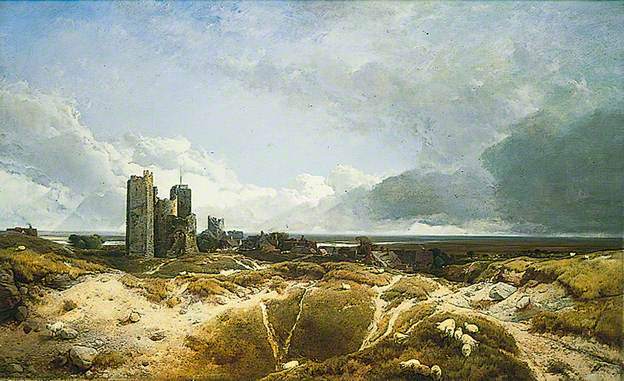
|
Orford Castle, SuffolkOil on canvas
|
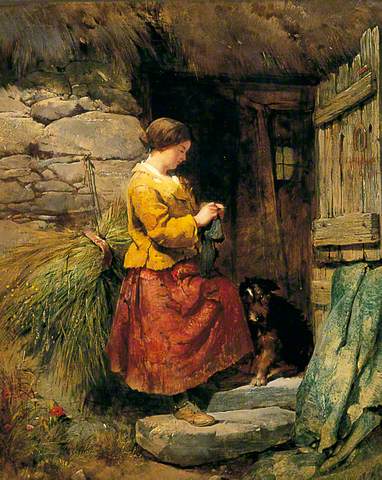
|
The Cottage DoorOil on canvas
|
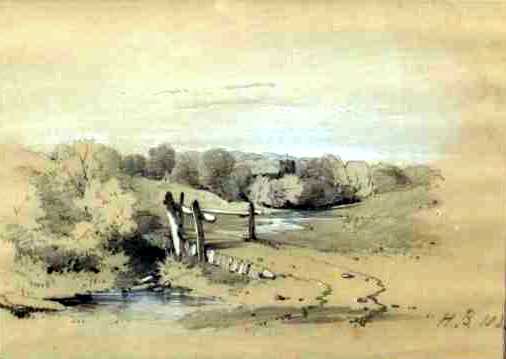
|
Bridge over a StreamPencil and chalk
|
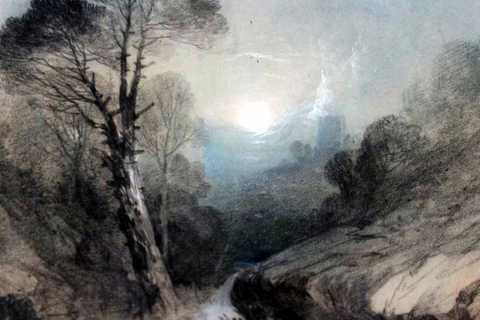
|
Moonlit LandscapePencil and charcoal
|
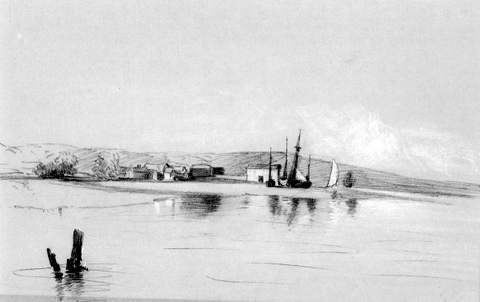
|
WoodbridgePastel on paper
|
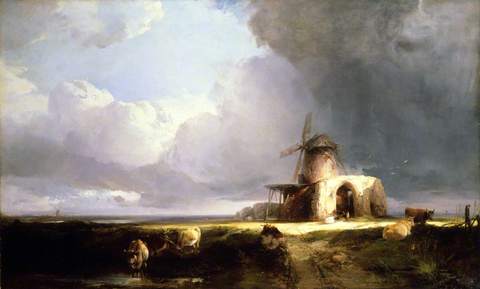
|
Remains of St Benedict's Abbey on the Norfolk MarshesOil on canvas
|
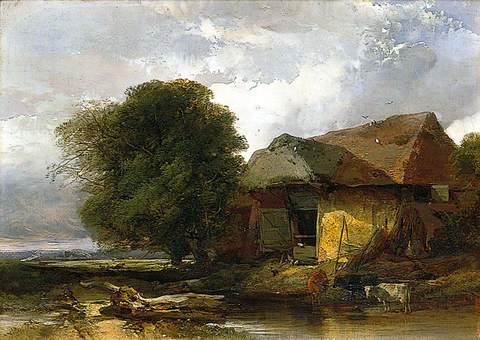
|
Old Barn, SuffolkOil on canvas
|
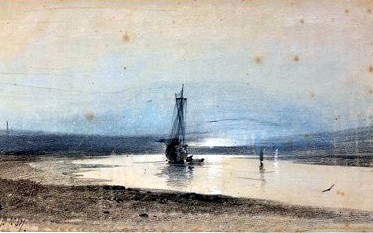
|
Moonlit Coastal ScenePastel
|
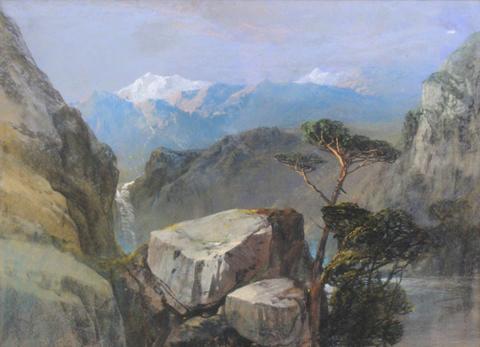
|
A Mountain LandscapePastel heightened with white chalks
|